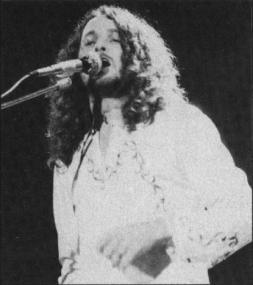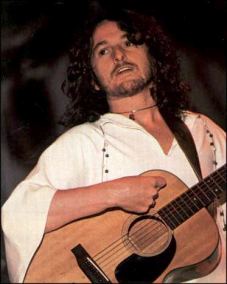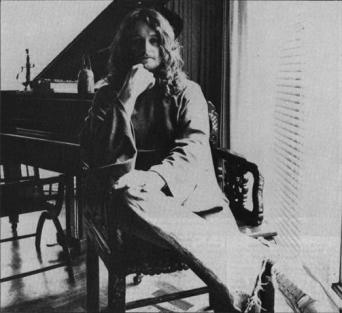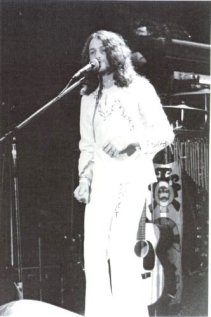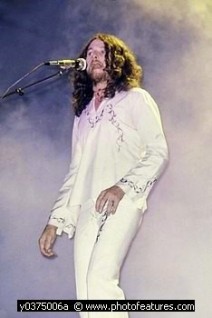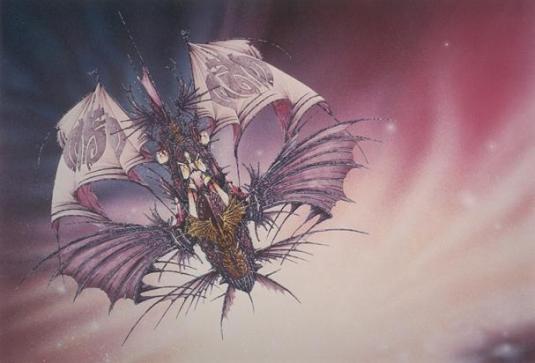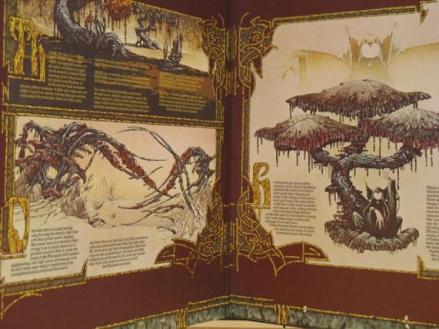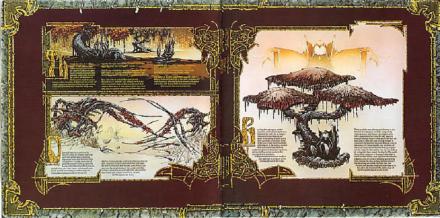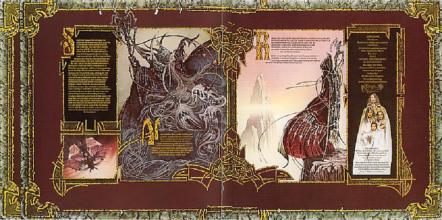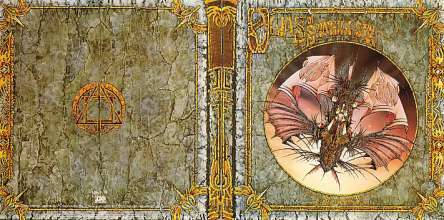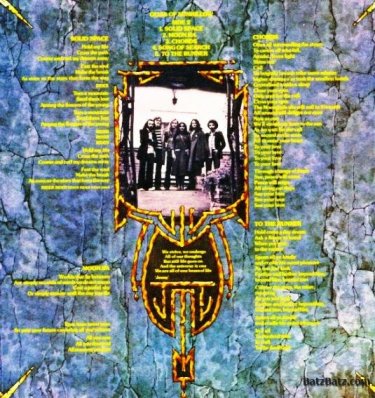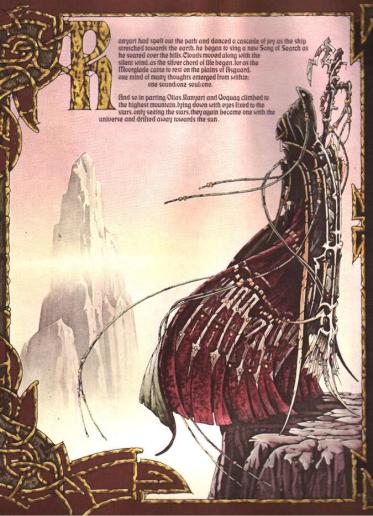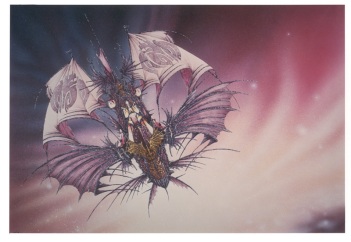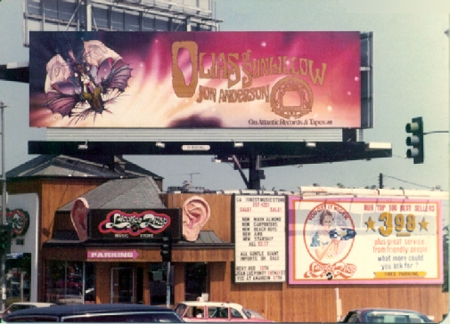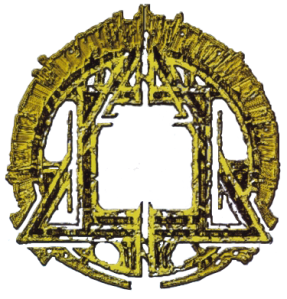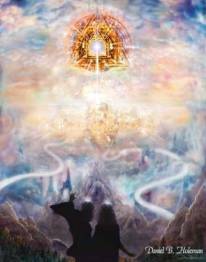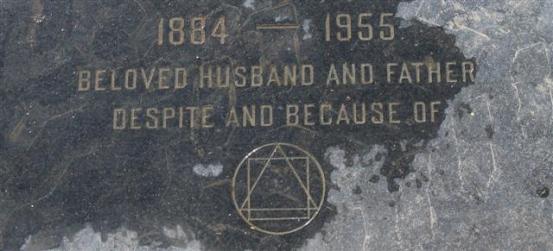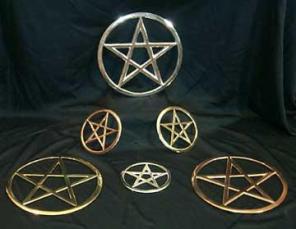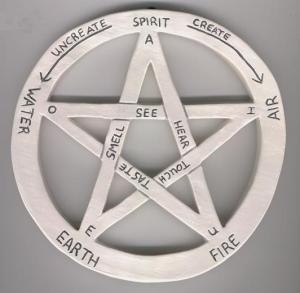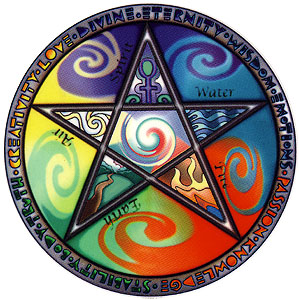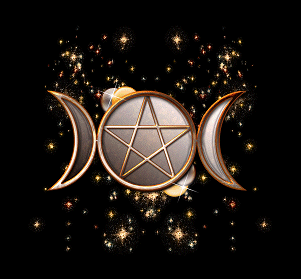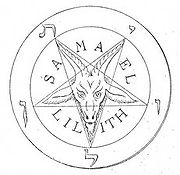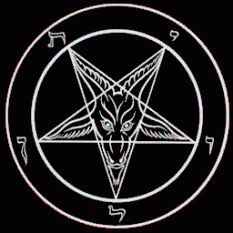The songs of Jon Anderson’s epic album Olias of Sunhillow (1976) tell a story based upon the following original tale by Anderson which appears on the inner sleeve of the album (including an attached page) within the gatefold artwork by David Fairbrother-Roe.
The Story
by Jon Anderson
Through the mist of a million years of energy three riders skimmed the surface of the plain of Tallowcross and raced towards a dream. Their meeting point lying between the glades and Gardens of Geda and the high mountain masses, where fountains of light and colour and soft winds of passion, openly existing through wisdom, surrounded the three that silent eve, they sang together through motions only ways, as all around them sparkled and chorused in wonder.
OLIAS was to build the ship the Moorglade Mover
RANYART was to guide the moments begotten light
QOQUAQ a leader, a fashioner of peoples of Sunhillow.
Four tribes lived on Sunhillow and existed through music, rhythms and tempos, each of the tribes attained a light of their own through their songs to their stars, so their energy, their souls, their time, their movements were all accordant to the stars.
NAGRANIUM – deep dark skinned streched beat
ASATRANIUS – jangled lines of monotone
ORACTANIOM – cascading ready light metal
NORDRANIOUS – weavers of body sound
The dance of Ranyart would start the call; with beams of alternity directed to the skies. Bending the staff of motions begotten light, he moved with grace within him and charged the air to part and carry him towards the course of passion.
Olias had been busy, and having sang his song the metalic-like trees with their golden leaves jingling like winter snow, had motioned their strong roots to slowly dance out of position towards Olias to create the frame of the Moorglade. With spread-eagled wings and high masts with enough room for all, it stood, near ready, it needed only to be strengthened and covered and this was for the fish of the ocean the ‘solar’ to do. Olias reach out with voice and sound to ease them from their play. As intertwined and inter moving parts of the ocean rose into the air glistening in the quick wind, they rushed expectantly towards the frame and crashed their forms and clasped and died as all will: the Moorglade was ready.
Hurtling through space amidst countless sister planets. Sunhillow had held the tribes for as long as time would allow; Qoquaq sat alone in the valley, at close points to all, and sang of the mass lands to the East; as the sound ascended and rang out of the valley, a distant form was heard, deep rhythms awoke that spelt of a movement, as slowly and surely Nagrunium awoke to the message of love and haste. A deep throated drone from the East was heard as an array of sound converged toward the valley.
Metal could be seen glinting and chiming in the Western mist. Qoquaq, translike, sang out the rhythms in one clear tone as the singers of the North approached the scene. As they began to mingle a strange discord arose; each tribe had not seen of each other and were at once charged to counteract the balance. Only seen through a veil of innocence, still the movement was so strong all that could move, moved toward Qoquaq, so great was his song. He then gently rose as if not seen at all and guided them toward the ship the Moorglade Mover. Olias sang out to Qoquaq as the tribes of sound, in their transic state, appeared on the plain of Tallowcross. His song of welcome was to bring them closer to the ship, as they climbed on board the noise rang out within, rhythms took over rhythm and became more and more intense so that all in one movement the giant wings of the Moorglade began to take to life.
Slowly she dragged herself along the plain, onto the ocean from which point the ocean began to move underneath the feel of the ship. The solar shell counter-reacting with the live made sense of vision, and as the Moorglade began to race, inventing speed, a great writhing tidal wave became and rose high towards the stars, thrusting the Moorglade high into space and to flight with giant sails beaming to the stars, and as the ship travelled into space a thunderous crash was heard in the distance as Sunhillow exploded into millions of silent teardrops.
Inside the ship all had quietened and as Olias and Qoquaq were in a unified trance piloting the ship and Ranyart in deep space of position; the tribes were left to see for themselves their own situation.
Almost at once there was a hum of doubt which doubled to a noise and shuffle of discontented tremours within. Moon Ra, the disorientation had shown its face, they cried and screamed for mercy tearing at each others and their own feelings, releasing only fear and pain. The sound was utter disharmony of balance resounding to such a voiceless pitch and counterpitch so that which rose from their surroundings was awkward and sullen, their own fear had created a form from deep within their own souls. All was bared before them. The form rose and filled the inside walls of Moorglade so as to split the walls around to such a force and strain as to crash all into the vastness of space to be lost forever.
At this moment Olias awoke from his pilot position, standing, his arms outstretched he held within him the terror and cries of torment from the people, he sang chords of love and life and caressed the form until it surrended. The people now in a dazed light relaxed and slept underneath a crystal blanket, each in a chrysalis state, as the Moorglade journeyed on through space a song of love was released and played among them.
Ranyart had spelt out the path and danced a cascade of joy as the ship stretched towards the earth, he began to sing a new Song of Search as he soared over the hills. Clouds moved along with the silent wind, as the silver chord of life began, for as the Moorglade came to rest on the plains of Asguard, one mind of many thoughts emerged from within; one sound; one soul; one.
And so in parting Olias, Ranyart and Qoquaq climbed to the highest mountain, lying down with eyes fixed to the stars, only seeing the stars, they again became one with the universe and drifted away towards the sun.

